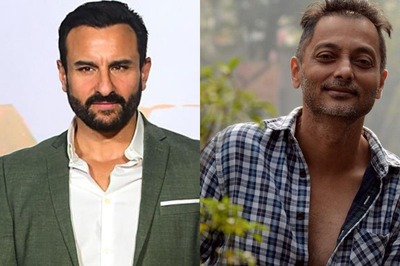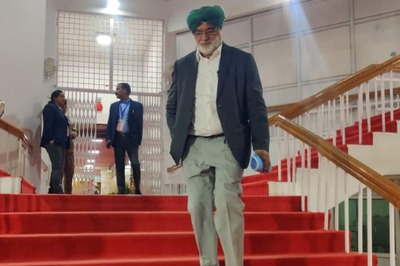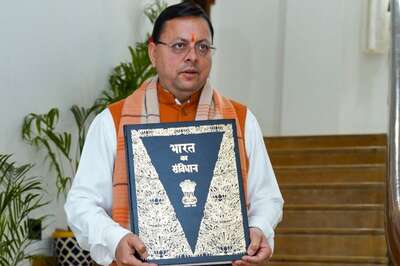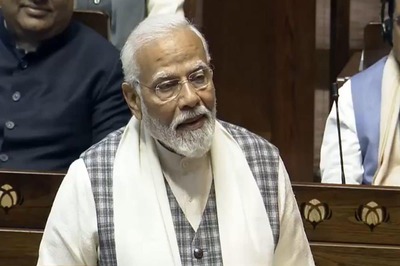
views
Contemporary Assam has been marked by many a milestone but the ULFA issue, which initially started as a movement but transformed quickly into an armed struggle characterised by kidnappings, extortions, killings and bomb blasts, continued to remain at the top of the many contentious issues that needed a resolution.
Now, with the signing of a tripartite agreement between the central government, the Assam government and the pro-talks faction of the outfit on Friday, a significant chapter has been written in the state’s 44-year journey of twists and turns in the ULFA insurgency.
The Paresh Barua-led ULFA (Independent) faction did not join the negotiations because it wanted Assam’s “sovereignty” discussed — the only irritant in the four-decade-old problem that is near to a solution. The Barua faction cadres have been engaged in sporadic incidents of violence, with security forces intensifying operations.
The opposition and civil society organisations have touted the peace accord as a half-baked solution, but it still marks an important landmark because despite several attempts for a negotiated settlement since 1991, there has been no major breakthrough or a document of commitment.
The United Liberation Front of Assam, or ULFA, was initially influenced by the insurgency in neighbouring Nagaland and Mizoram. In its early days, it gained popularity among the rural masses, particularly attracting rural educated but unemployed youths.
Here’s a timeline of the ULFA insurgency that changed the sociopolitical landscape of Assam:
- April 7, 1979: A group of 20 youngsters from the Upper Assam districts, including Paresh Barua, Arabinda Rajkhowa, Anup Chetia, Bhupen Borgohain, Pradip Gogoi, Bhadreshwar Gohain and Budheswar Gogoi, formed the ULFA at the historic Ahom-era amphitheatre Rang Ghar at Sivasagar. It was formed as an armed struggle with the aim to form an independent state of Assam.
- 1985: The outfit is reported to have wielded considerable power during the first AGP (Asom Gana Parishad) government but the bonhomie gradually waned as the state slipped into turmoil with a spate of the kidnappings, extortions and killings unleashed by the ULFA.
- November 1990: ULFA extortions from the tea gardens were at the peak and the Doomdooma-based Unilever lifted seven of its executives to New Delhi with the help of the home ministry but by keeping the state government in the dark. The Indian Army launched ‘Operation Bajrang’ against the ULFA on November 28, 1990. The military operation led to the arrest of 1,221 militants. President’s Rule was imposed in the state while the Prafulla Mahanta-led AGP government was dismissed.
- January 30, 1991: Assam was declared a ‘disturbed area’ and the Armed Forces (Special Powers) Act or AFSPA was imposed. The ULFA was declared a separatist and unlawful organisation, which remains in force to date. It was, however, during this operation that the doors for negotiations between the Centre and the insurgent group opened for the first time. The then prime minister Chandrasekhar said in Rajya Sabha that the government will take necessary steps if the outfit expressed willingness for political talks. The ULFA, however, responded that no talks could be possible as long as army operation and President’s Rule continued. They even stressed that there will be no compromise on their demand of ‘sovereignty’.
- June 1991: A Congress government led by Hiteswar Saikia assumed office but killings and violence by the ULFA continued unabated and the army was called in again.
- September 15, 1991: ‘Operation Rhino’ was launched to counter increasing insurgency in the state.
- 1992: This is the first time that the outfit split when a section of leaders and cadres expressed a desire for talks. But, both Arabinda Rajkhowa and Paresh Barua had then been firm on the ‘sovereignty’ clause. Those desiring talks surrendered and organised themselves as ‘Surrendered ULFA’ or ‘SULFA’, holding formidable sway in the state in the 1990s and early 2000s. Both the Congress and the subsequent AGP (Asom Gana Parishad) governments used them effectively against the ULFA. The AGP government, in its second term, is alleged to have used the surrendered members in the killings of family members of ULFA leaders, which was termed “secret killings”.
- 1996: The AGP government returned to power with Mahanta at the helm. He agreed to the MHA’s suggestion to a coordinated strategy and plan of action to contain militancy.
- January 20, 1997: A unified command structure, constituting the army, state police and paramilitary forces with the state chief secretary as its head, came into being.
- December 13, 2003: Following two army operations against the outfit, the ULFA militants had reportedly relocated to camps in Bhutan but after they refused to comply with an ultimatum by the neighbouring country to close down the camps, the Royal Bhutan Army launched ‘Operation All Clear’ with the Indian Army assisting along the border to evacuate the injured rebels. All the camps were destroyed, more than 120 militants were killed and 90 insurgents surrendered but the top leaders escaped and regrouped in other neighbouring countries.
- 2004: There were attempts to bring the ULFA to the negotiating table and the outfit finally agreed to hold talks with the government.
- September 2005: The ULFA formed an 11-member ‘People’s Consultative Group’ (PCG) to prepare the grounds for an eventual negotiation, which was welcomed by the Centre. The PCG, headed by eminent Jnanpith award-winning author Indira (Mamoni) Raisom Goswami, held three rounds of talks with the Centre but failed to make any headway.
- June 24, 2008: While the outfit’s violent activities continued, mostly targeting tea estates and oil pipelines, cracks started developing with the leaders of its 28th Battalion, led by Mrinal Hazarika and Jiten Dutta declaring a unilateral ceasefire.
- December 2009: Top ULFA leaders, including Rajkhowa, were arrested in Bangladesh and deported to India and jailed in Guwahati. The jailed leaders took the initiative of forming the ‘Citizen Forum’, comprising intellectuals, writers, journalists and professionals from different fields to urge the government for talks.
- 2011: Rajkhowa and the other jailed ULFA leaders were released from prison. The outfit split for the second time and the top leadership agreed to come to the negotiating table without the sovereignty clause.
- 2012: The ULFA (pro-talks) faction submitted a 12-point charter of demands to the government.
- 2015: The ULFA’s general secretary, Anup Chetia, was released from a Bangladesh jail in 2015 after serving a term of 18 years since 1997.
- 2021: On assuming office, CM Himanta Biswa Sarma had sent out an olive branch to the Barua-led ULFA(I) for talks announcing a ceasefire of operations.
- April 2023: The Centre had sent a draft of the proposed agreement to the pro-talks faction.
- August 2023: Another round of discussion was held with the faction in New Delhi.
- October 2023: Chetia had said the pro-talks faction had sent its suggestions regarding the draft proposals to the Centre.
- December 29, 2023: Tripartite peace agreement was signed between Centre, Assam government, and the pro-talks faction of the ULFA in the presence of union home minister Amit Shah and Sarma.
(With PTI inputs)




















Comments
0 comment